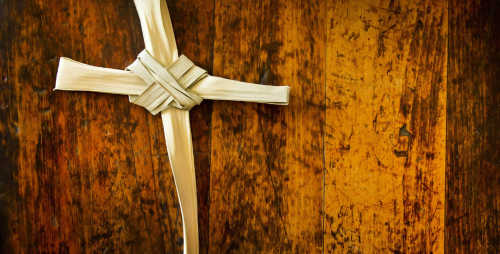
Formal rites for Palm Sunday typically begin with a Liturgy of the Palms including reading a Gospel account of Jesus’ entrance into Jerusalem. Such rites then proceed, a bit later, to reading the Passion from one of the Synoptic Gospels (this year, Year C, that is from Luke). The Passion in the Gospel of John is read on Good Friday.
People, of course, do other things.
This is the time of year I receive correspondence asking about leaving the reading of the Passion until Good Friday and simply focusing on the entry of Jesus to Jerusalem.
The oldest forms in Church History tended to have a procession with palms with the Palms Gospel read and a Eucharist with Matthew’s Passion. The other Passion accounts were read through Holy Week. The Sarum rite and different editions of the Book of Common Prayer reflect this way of doing things. The “Sunday next before Easter” was originally Passion Sunday. Shifting Passion Sunday to the previous Sunday was part of the development of calling this, simply, Palm Sunday – lengthening periods of commemoration is part of liturgical history. The earlier approaches have been restored in seeing the Sixth Sunday in Lent as being Passion Sunday with the Liturgy of Palms. This is the approach followed here in my (free online) book Celebrating Eucharist.
People will do all sorts of other things, of course, not mentioned in agreed and formal rites: donkeys are a common addition, for example.
Omitting the Passion Reading on the Sixth Sunday in Lent, and reading only the entry into Jerusalem with palms, is part of a tendency to turn liturgy into historicised re-enactment. This post is not a deprecation of using our imagination to be present in the biblical accounts, but liturgy, and the liturgical year, is much, much more than pretending. It is worth reflecting on why riding an actual donkey is not even presented as an option in formal and agreed Palm Sunday rites.
Those who reduce liturgy to imaginary re-enactment often go on to celebrate a Passover Seder on Maundy Thursday. If your community does this, please rethink this practice by reading this.
Liturgy is much more and much deeper than pretended re-enactment. If the re-enactment approach is followed, your community should omit the Last Supper story from the Eucharistic Prayer on Palm Sunday, because that hasn’t happened yet. And, in the Eucharistic Prayer, commemorating Christ’s death and resurrection should be omitted. Next we need to move the celebration of the Annunciation to before Advent, and certainly not have the Annunciation after Christmas and the baptism of Christ – and where we’ve just celebrated it, horror of horrors, in the middle of pretending Jesus is in the desert. Whoops: there’s no time between the desert and Palm Sunday! Time to move Lent…
No, liturgy is on Good Friday, for example, commemorating Christ’s death in the presence of the Risen Christ. Christmas is celebrating the Incarnation – not simply imagining a cute baby and being moved by our human instincts around babies – and the incarnation is celebrated with bread and wine to make present the Incarnate One’s death and resurrection.
Yes, we celebrate Christ’s death and resurrection in liturgy – but we do so not simply to re-enact past events – the purpose of liturgy is that we might be incorporated more and more into these events; the purpose of liturgy is not to have Christ die over and over again in our imagination; the purpose of liturgy is that we die and rise again a bit more each time – individually and together.



We at S. Thomas’ will being reading The Passion (the shorter one allowed).